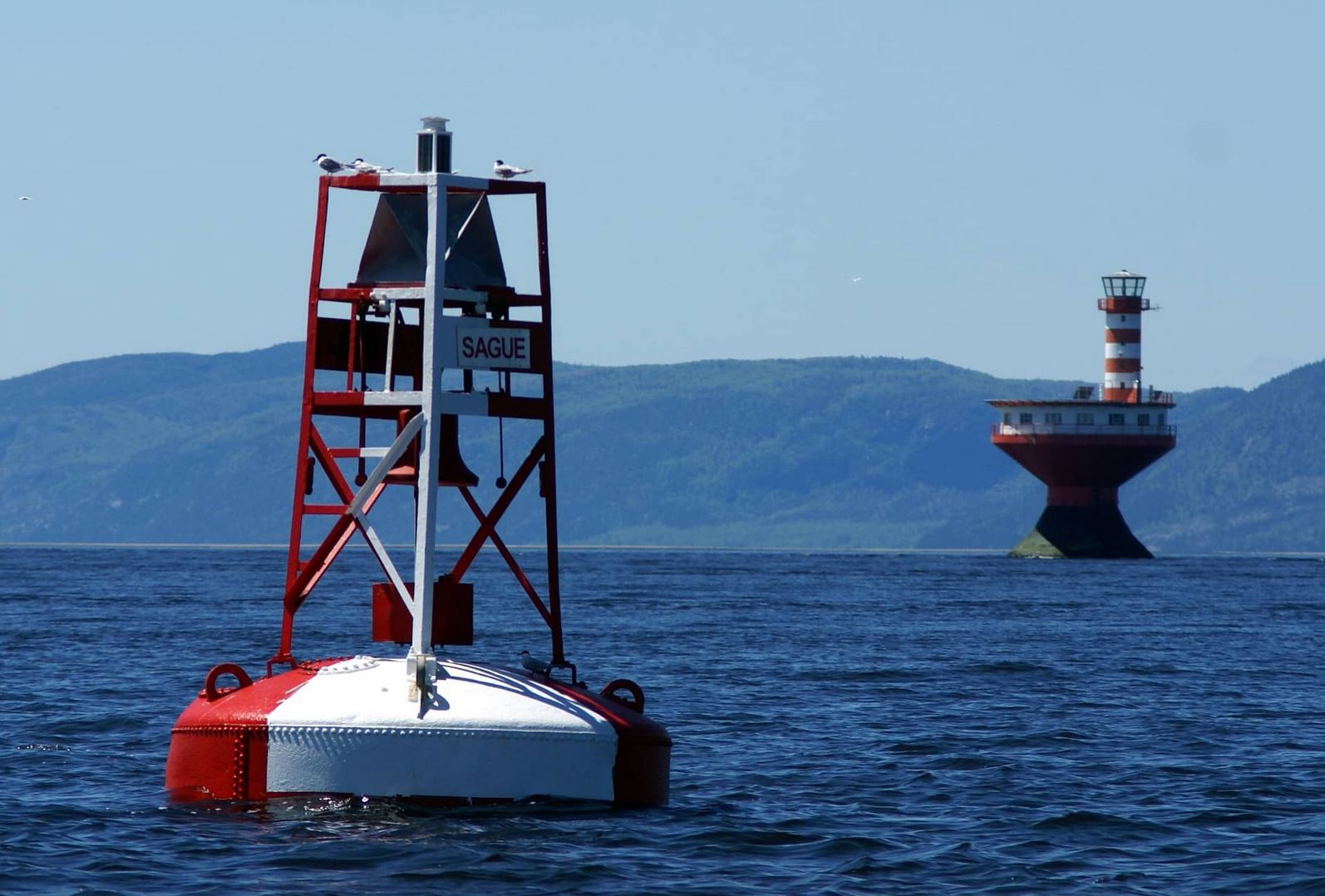While sailing coastal waters, we might see lights of different colours at night, and buoys of different shapes and colours during the daytime. With just a few differences, the light characteristics, shapes and colours will be the same all over the world. You will need to know what they mean in order to sail safely, and if you intend to take a Day Skipper or Yachtmaster exam.

Buoyage systems
Buoyage systems are decided by IALA, the International Association of Lighthouse Authorities (or, to give it its full name, IALA AISM, the International Association of Marine Aids to Navigation and Lighthouse Authorities).

There are two recognised buoyage systems, IALA A and IALA B. IALA A is used, for example, in the UK, EU, India, Australia, New Zealand, African countries and most of Asia. IALA B is used in Japan, Korea, the Philippines, the US, Canada and South American countries. The difference between the systems is the colour of port and starboard buoys. More on that later.
Different types of buoys
For convenience, we have divided the types of buoys into three groups. These groups are cardinal marks, channel markers, and safety/warning marks.
Buoys on your chart
Buoys are marked on charts with shorthand symbols and descriptions to help you identify them. You will see information about the type of buoy (shown by its shape), its colour (for example R, G, Y, B, Bu for red, green, yellow, black and blue) and its light characteristics, as well as any other information (for example, if a buoy has a bell or emits a signal visible on radar, how far it is visible, and if it has a name). Where buoys are of more than one colour, the abbreviations are listed top to bottom for horizontal bands, and dark to light for vertical or diagonal bands.
If you don’t have a copy of Admiralty Chart 5011, and you use UK charts, we recommend that you buy one. It’s a book that gives every chart symbol you can expect to find, including all those you must know if you intend to take a Day Skipper or Yachtmaster exam.
Light characteristics
Light characteristics of buoys are abbreviated for colour (for example, W, R, G, Y, Bu, for white, red, green, yellow and blue). If no colour is given, the light will be white. You will also see information about the nature of the light, how fast it flashes, and how often. For example, a light marked “flashing” (Fl) is characterised by periods of light that are shorter than the dark periods in between, while a “quick” (Q) light has 50 to 79 flashes per minute. A number in brackets tells you how many flashes to expect in each group. For example “Q(3)” is a light that flashes quickly in groups of three. And a time period, marked by “s”, tells you how often the flash or groups of flashes occur, for example “Q(3)10s” is a light that flashes quickly in groups of three, every 10 seconds (counting from the first flash).
If buoys are lit, this will be shown with a violet flash on some charts, and a flash in the colour of the light on others, like this:

You can download a chart of light characteristics and what they mean here.
In a moment, we will look in more details at the characteristics of different buoys. Before that, watch our short animation about buoyage. It is available in English and Polish. To watch the English version, click the image on the left. To watch the Polish version, click on the right. Whichever you choose, you will be taken to our YouTube channel in a new tab. When you have finished watching, come back and click continue at the bottom of this page.
Click here to go to the next page, where we will look at different types of buoys.



Pingback:Sail training theory tutorial 8: buoys and buoyage part II – Sail Ho!